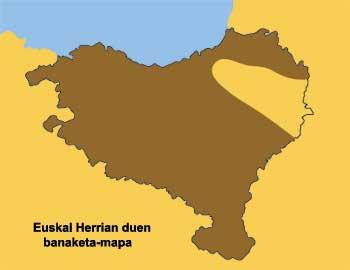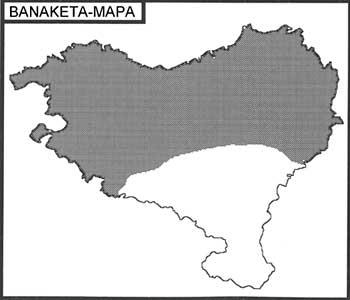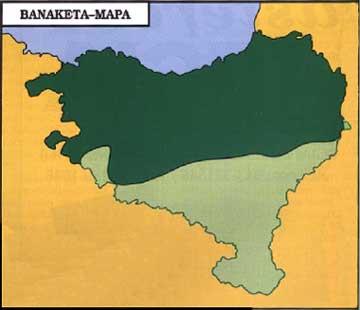Red frog, intsectorial callus
1992/05/01 Aihartza, Joxerra Iturria: Elhuyar aldizkaria
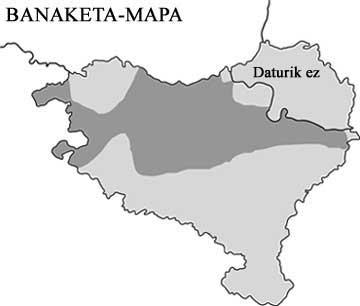
One of the most important ecological characteristics of deciduous forests in temperate regions is that wood is most of the vegetable biomass produced. As is known, lignin, a component of wood, is not digested by higher animals, and the most abundant raw material in these forests is directly inaccessible to vertebrates.
However, and through the intermediation of bacteria, fungi and a multitude of invertebrates, the energy collected in wood and leaves will be the one that will sustain the macrofauna of our beech, oak, marojales, etc., which makes most of the vertebrates that inhabit these plant formations predators, especially insectivores. Among them, and thanks to the glow and humidity of plant ecosystems, amphibians have great possibilities to live, with the red frog as an example.
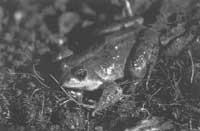
The red wild frog (temporary frog) is a magnificent cruise of about 10 cm in length. The head is wider than long, with the round end, and the large eyes, dorsolaterally placed, give it a curious appearance. The eardrum is visible and its diameter is slightly larger than half that of the eye. Like the rest of amphibians, the frog has 4 fingers on the front legs and 5 on the back, which are joined by interdigital membranes. In general, it is a forest frog of strong amphibian, equipped with circular dress and strong arms and legs, with relatively fast movements between the forest leaflets, indicating the terrestrial character of the animal.
On the other hand, and as the name suggests, the coloring of the animal can be pink, reddish, or even almost orange, always adorned with brown-reddish spots, although its abundance and location vary from one grain to another. In any case, all specimens, from the nasal to the eye and the eardrum, have a dark brown spot that extends to the shoulder. On the horns, on the dorsal side, dark transverse marks appear. As is evident, this clothing is cryptic and disruptive as it travels through the soil of the jungle. Therefore, it is one of the animal's defenses, no doubt. As for the ventral area, most of the time it is whitish, yellow or pale pink, with a darker reddish scar.
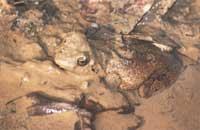
In the case of this animal, sexual dimorphism is not too evident, since, among other things, fillets of mouth, which uses the male in heat to sing, are usually internal. Normally, and like most amuros, females are larger than males, while they look more slender. On the other hand, the male has stronger arms and, in addition, the inner finger of the hands is wider, with a characteristic dark mask located on the dorsolateral side of the male.
Like most land amphibians, the wild frog has a dusk and nocturnal lifestyle, due to the need of these animals to avoid dehydration, so we will only see it on rainy days. As already mentioned, this animal is a ruthless predator that feeds on invertebrates, and its hunting pieces, such as insects, spiders, annelids, molluscs and crustaceans, especially cucuruches (Armadillium vulgare).
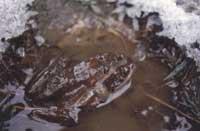
When the sun loses strength and dominates the freshness of twilight, it leaves the forest frog's hiding place in the leaves or under the moss to explore all corners of the area, slowly, without haste, standing there and here. And it is that, although the forest frog catches every night a lot of unimaginable invertebrates, this animal detects its pieces “in hope”: being as standing as the litter, looks at everything that moves around it until the piece is placed at its end.
Then, with the thrust of the erect and rear in the front legs, he advances his head like lightning and throws the adhesive tongue at the prey, immediately giving his mouth and backing. With the “dinner” in her goat, she devours her whole. Closing your big eyes for this job helps you. And is that, not having just bones in the palate, closing the eyes pushes to the throat anything that can have in the mouth.
In normal conditions the red frog is a terrestrial animal. However, in the hottest times of the year it is found mainly near water, while populations that inhabit higher areas have their residence in rivers and rivers.
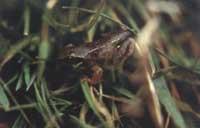
At the arrival of winter the forest frog hibern, hidden under stones or mosses, but throughout January or February leaves this situation and comes the zeal (breeding season) to this singular amphibian. At that time, the males first and the females later, the forest frogs are collected in the ponds and ponds of their places of residence, in high concentrations for the laying of the eggs. The show is impressive: males compete with each other and fight to catch the female, and sometimes they can see up to four and five males attached to the same female.
In the end, one of them manages to catch the female with a lumbar amplexus, and thanks to the adhesive masks of the hands will be hooked to her until completing the ration and fertilization. In this situation, and with the help of the male's strong embrace, the female lays hundreds or thousands of eggs. The male secretes at the same time sperm, when fertilization occurs in the water. The eggs thus eliminated have an approximate diameter of 2.5 mm and are protected by a multigegated gelatinous cap that is hydrated and inflates nothing more be thrown, being the diameter of the egg and the cap of 10-15 mm.
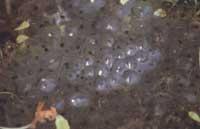
All the eggs remain at the bottom of the water forming a distinctive gag, and the black desserts that are born a month will take three or four more months to grow, metamorphosis and disembark. At this time, the frogs that leave the aquatic environment behind and head towards the forest leaflets have an approximate length of 10 mm.
The red wild frog is a paleoarchaic species of wide extension, Eurosiberian, whose main habitats are in montane. Although in the Basque Country it has been observed from sea level to an altitude of 1,600 to 1,700 m, in the Pyrenees it has also been located in zones of 3,000 m. However, the strongest populations develop in grassland areas of beech, oak, marojales and mountains and highlands.
As for the population status of the animal, this is quite good in mountainous and high areas. On the contrary, the drying of wells and ponds necessary for animals to reproduce at low altitudes causes great damage. And on the other hand, furtivism has also caused a big setback in this elegant frog. Despite being legally protected, they hunt for food, taking advantage of the breeding season (the most important for the animal and the least protected).
Technical information: Red wild frog species:Temporary frogfamily:
RANIDOSORDEN:
Anuros class:
AMPHIBIANS

Gai honi buruzko eduki gehiago
Elhuyarrek garatutako teknologia



